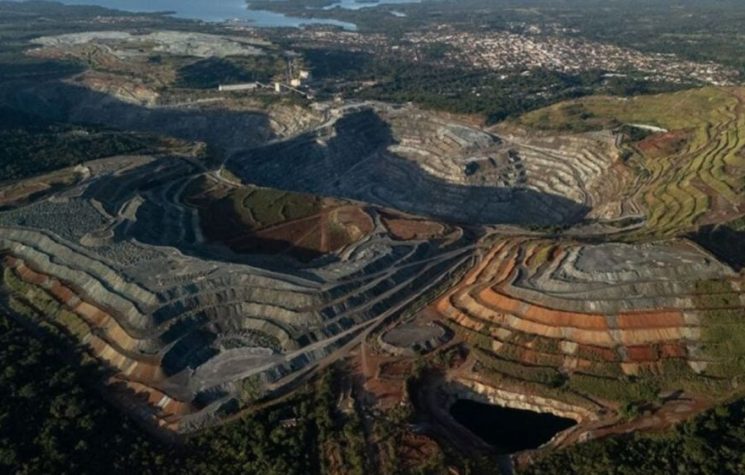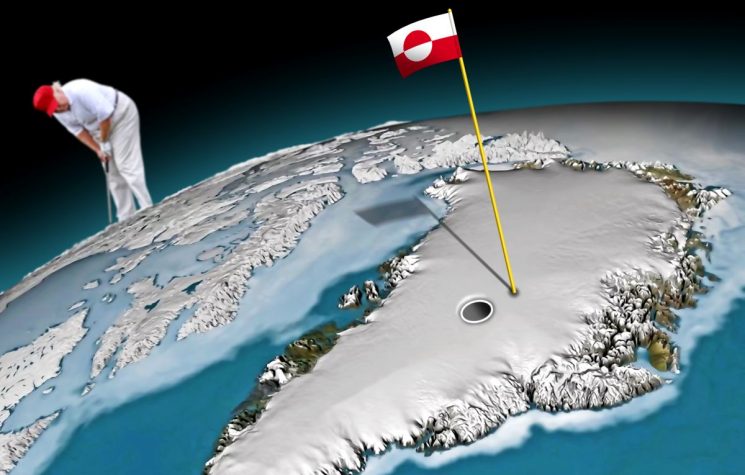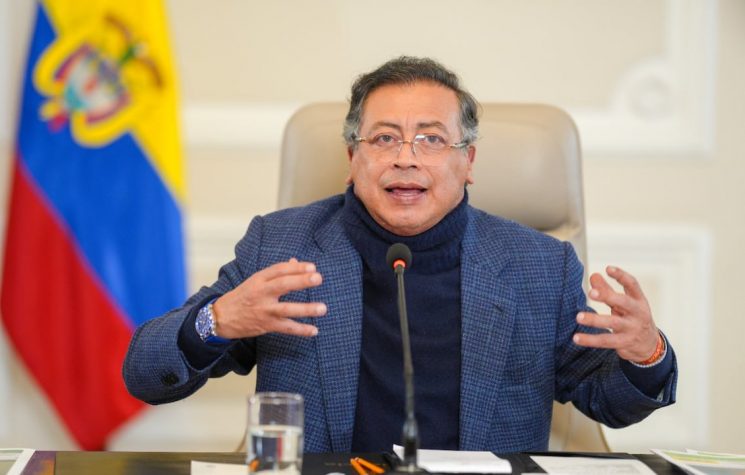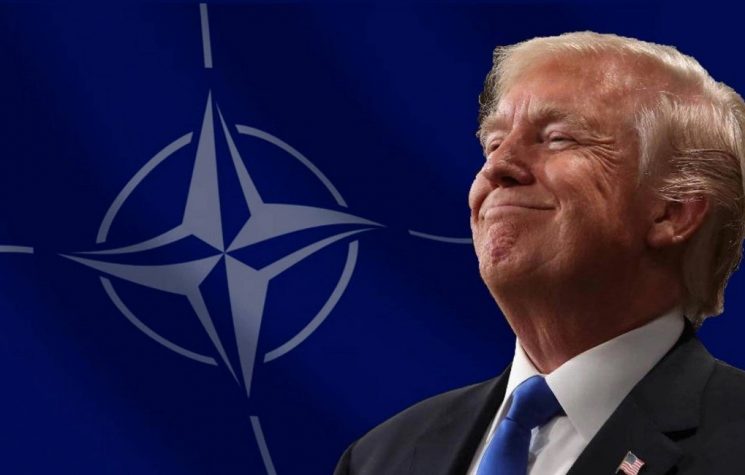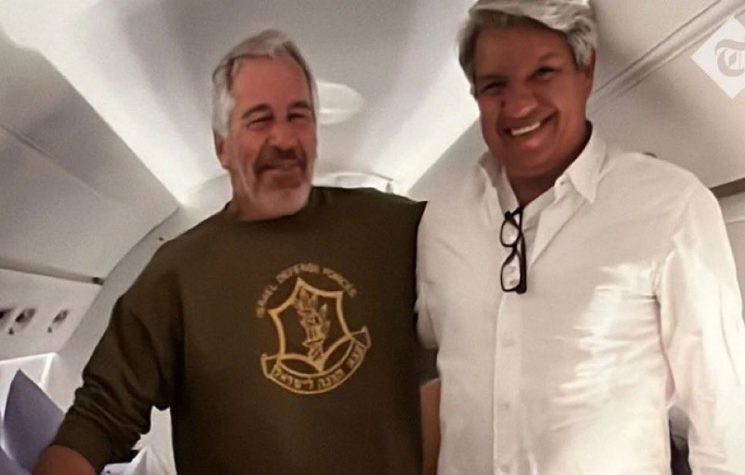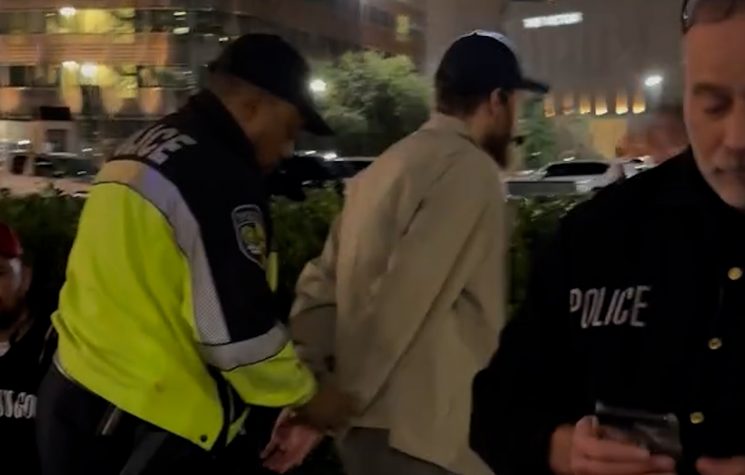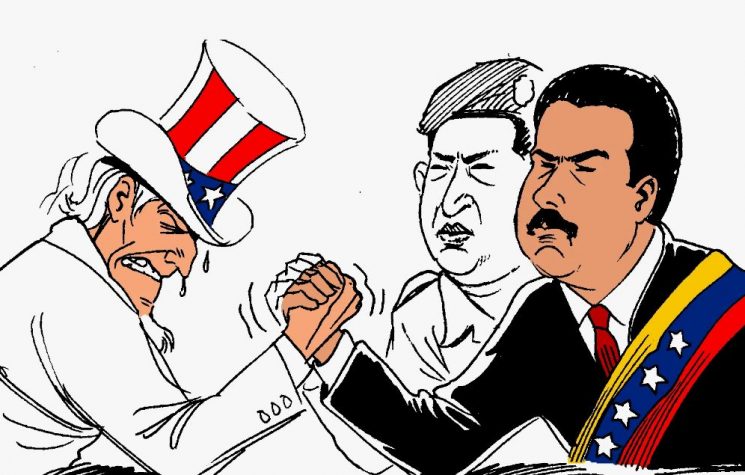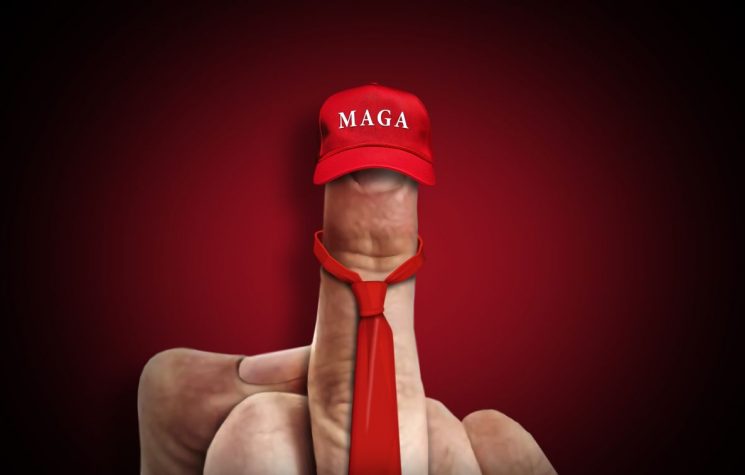In America – as in Europe – there is fear and anger at system disintegration, Alastair Crooke writes.
The train wreck has been expected for so long that we have become comfortable living under its shadow. Life went on; markets were sanguine that the market lifestyle subsidy provided by the Central Banks would continue unabated. And not without good reason either: Any trader disappointment at Central Bank action, any dip in markets, brought forth a collective market hissy fit that usually strong-armed the Central Banks into immediate appeasement. We were hard pressed to imagine differently.
Now, however, we’re in a new era, in many ways. The West has entered upon a war with Russia and China. The West, however, did not do its homework first, and now is finding that the ‘war’ is cruelly revealing the structural rigidities and flaws integral to its own economic system, rather than mining the weaknesses of its rivals.
Why is this new era so grave? Firstly, because of what lies ‘beneath the stones’. These structural contradictions have been accumulating over decades, lurking in the dark damp underside to the stones. Kept hidden from sight by the serendipitous (for the U.S.) economic outcome to WW2, and the equally serendipitous combination of factors that kept inflation low (so low that western economists believed they had found the ‘holy grail’ of monetary ‘easing’ – they had banished recessions for ever). So simple, really, just turn on the money-printer!
Hubris prevailed. It was magic: a ‘new economics’. And then inadvertently, Team Biden kicked over the stones in their eagerness to cut Russia down to size (instigating sanctions and stealing Russia’s foreign reserves). And Inflation was the serpent under the rock. Long latent, unseen, yet always present. And no longer one serpent, but now many.
And then they found they are fighting the wrong war: Ukraine was conceived as the urban war American and NATO trainers had absorbed from the jihadists fighting President Assad in Syria. But Russia knew this type of war well – they did not bite; instead, they fought a classic artillery war (in which Russia traditionally has excelled).
So, the serpents of inflation – at a time of structural economic checkmate – are loosened, as they always are in war. And as pressures mount, ‘things’ and people get thrown under a bus. ‘War’ makes for clarity: It becomes starkly clear what baggage must go overboard to save the vessel.
Saving the vessel, of course, is imperative. Thus, America has decided to look after ‘its own’. The Davos-Brussels plan to eventually to roll-up the over-indebted European commercial banks into a single, Brussels-controlled digital currency suddenly is seen – as if scales had fallen from the eyes – as potentially threatening to hole the hull below the waterline.
What this reveals is that the ‘strong dollar–weak dollar play’ – in tandem with Treasury sanctions – has been ‘not so bad’ for the NY Big Banks! Why let the Europeans scoop up all those distressed assets that pop-up in times of crisis? Why allow the U.S. big banking sphere to dissolve into a world of fin-tech Apps? Why deprive the former of their historic raiding rights? Why stop now because the Europeans want ‘Davos’.
So, the U.S. Big Banks are thinking, let the ECB – and by extension the Euro Zone – ‘fall under the bus’. Co-ordinating policy with the ECB anyway has tied the hands of the Fed to manage affairs to its own advantage.
With ‘war’, the serpents crawl out. Again, a stark clarity emerges: What worked when inflation was less than 2% doesn’t ‘cut it’ at double digit inflation. The low inflation era was dominated by monetarist dogma. And so, it also bred structural contradictions. Even moderate interest rate increases now risk eviscerating bonds and highly leveraged U.S. companies, and yet still will not be high enough to stem inflation. The Fed’s 75bps rate hike is a drop in the bucket compared to what will be needed to slow the inflationary crisis.
What to do? With war comes inflation and a decline in those willing to fund the U.S. government’s borrowing requirement – as interest due on $30 trillion blows out. Interest rates therefore must rise (even if they do nothing to stem inflation) to keep ‘value’ in Treasuries. Thrown under the next bus too then is the U.S. consumer as inflation will soar.
Higher rates however, have not been enough to lure outside investors into treasury markets, with treasuries now facing the worst bond market collapse in half a century. This has led China to dump U.S. Treasuries to the lowest level in 12 years, and Japan, once a stalwart pillar of U.S. investment, is cutting their holdings as well.
The decline in U.S. treasuries along with the ongoing decline in the U.S. dollar as the world reserve currency leads to one thing: More inflation; more pain.
Here is another structural contradiction thrown up by the monetarist era. Theoretically, should the Fed crash ‘demand’ enough (by making people so poor they cannot afford things), inflation can quicky be lowered to 2%. Huge sigh of relief ensues – Can the Fed then get back to printing money again? Not so quick, please – this outcome is ‘monetarist group think’. It is part of the hubris: Today’s narrative is that the Fed can hike until the year-end; hammer the consumer senseless; and then start the printing presses again, so that the market lifestyle subsidy is ‘on’ again.
It’s the war, stupid (to misquote President Clinton). If you take a sanctions hammer to a fragile ‘just in time’ complex supply network, you will have supply blockages – and cost push inflation is inevitable. Turning-on the money tap when you face supply-generated inflation will only return the inflationary dynamic to the system. What the Fed is trying to do is to keepsome benefits of a reserve currency intact, at a time when commodity-value as a trading medium commands the world’s attention.
What is this likely to mean in terms of practical politics? Well, cost-of-living crises are already here, as is the beginning to the ensuing political ructions. The ECB last week announced the end of the asset purchases and did not put anything else in place. All the ECB said was that it would work on an ‘emergency instrument’.
So clearly there is an emergency – yet there is no new instrument and there won’t be one. The ECB can use an existing QE tool to buy an unlimited amount of sovereign bonds, or not. It’s a choice, not a new tool.
The Euro is but a derivative of the dollar (which itself is a derivative of the underlying collateral). The Euro-system (to use a military metaphor) was built to protect existing, static, defensive lines: It is no roving, mobile expeditionary military force.
The systemic basis to the Euro-zone has been the ECB’s absolute commitment to keep German 10-year Bund at a managed premium over 10-year U.S. Treasuries (these are respectively the two ‘value anchors’ underpinning the functioning of the Euro-zone).
And, as interest rates rise in the U.S., this must be reflected in the Bund (to preserve its ‘value’) – for sovereign bonds represent the highly leveraged collateral upon which the European banking edifice stands (or not). If the value of, say, Italian collateral declines, a financial doom loop sets in – as it did in 2012. In a word, the Euro Zone potentially would collapse.
At 2% inflation, European sovereign bonds could be kept more or less aligned. At 8% they cannot. And the bond market is fragmenting. The spreads between states’ bonds have skyrocketed in recent weeks. As a stopgap, the ECB seems to be selling German bunds to buy Italian debt.
What does this portend for the future? A hint of what might be coming was when Christine Lagarde left no doubt that the ECB will at least try to tough it out. She said during a conversation at the London School of Economics that the ECB would not subject itself to financial dominance. Financial dominance is a broader concept than ‘fiscal dominance’ because it includes bailing out banks and other financial institutions, as well as government borrowing needs.
That sounds very much like her stating a readiness to throw either EU banks – or countries, or both – under a bus.Hypothetically, the only remedy might be a mutualised Eurobond and full QE (though that would require EU treaty renegotiation). QE would of course, exacerbate inflation and the spreads.
But would the northern frugal states acquiesce? Might they not prefer to opt for a truncated, frugalist mini-Euro Zone by throwing Portugal, Italy, Greece, and Spain under the bus?
This effectively might at least, save a core to the Euro ‘project’ by winnowing out the weaker states, and reserving the Euro to the less indebted northern economies. The consequence would be a Europe emulating that which Wall Street did to Russia during the Yeltsin era: i.e., imagine it as Italy, with its assets ‘privatised’ and sold-off for $1 (as Draghi once did to Banco Popular, which he ‘took over’ as ECB chief, and then sold to Santander for Euro 1).
As of now, it seems the Euro-élites have not sensed the danger they are in. They entered ‘a war’, and already three major geo-political tectonic shifts are visible. Firstly, Putin’s ‘rebellion’ has prompted the Rest of the World to say that they have ‘had it’ with ‘Westification’ (by which is meant the predatory, grasping type of colonialism that has characterised western foreign policy). By all means, be ‘the West’, but not ‘Westified’; by all means be ‘European’, but not an ‘EU-values missionary’, the non-westerners suggest.
Secondly, European voters are not looking for more efficient markets or regulatory structures. As the cold winds of recession blow, they look to their leaders for protection from markets and regulatory absurdities. They sense the danger of unknown ‘doom-loops’ imploding parts of their economy. They are beginning to understand that in wars, rivals strike back too. War is ‘what it is’.
The risk coming from the cost-of-living crisis is easy to grasp. The risk from additional food shortages is almost beyond calculation. But what we observe from America, and the recent round of the French Assembly elections, is normal politics checkmated; social distrust; widening reservations toward the legitimacy of central authority; and increasing scepticism and doubts about ideologised SCIENCE.
In the U.S., there is evident a centrifugal separation reflected in migratory flows: The checkmating, the toxification of politics is leading Americans to want to live amongst their like-minded counterparts. It is, as it were, a political Ben Op – a literal and geographic mass movement to live within ‘encircled wagons’. And in states such as Florida and Texas (with their clear ‘tribal’ immigration), an increasing self-definition in opposition to the Federal government.
Thirdly there is in America – as in Europe – fear, and anger too, at system disintegration. Fear, as cities become both violent and mal-administered. The situation at Europe’s airports in these last weeks of sheer chaos and unbelievable queues gives a foretaste of the angst that is unleashed toward remote, techno fragile systems that simply freeze solid under pressure, triggering both anger and grievance.
War – even a war of choice – always reveals the fragility of complex systems. An article in the Atlantic recently noted that if “you, as a typical urban professional Millennial, woke up on a Casper mattress, worked out with a Peloton, Ubered to a WeWork, ordered on DoorDash for lunch, took a Lyft home, and ordered dinner through Postmates only to realize your partner had already started on a Blue Apron meal, your household had, in one day, interacted with eight unprofitable companies that collectively lost about $15 billion in one year”.
It has been a Millennial lifestyle subsidy that may vanish in the twinkling of an eye (or in one hike of an interest rate). It is a mirage. One that reflects the absurdities of the ‘cult of tech’ in a zero-interest rate era. It will soon be gone.
Yet, if our various crises stop at such minor inconveniences, we shall be lucky. Rather, we may well see ideological movements (as likely upper middle class, as drawn from the blue-collar sphere) split – with one part staying mainstream, and others seeking violence and revolution, as did the Baader-Meinhof and the Red Brigade groups in 1970s Europe.
In the U.S., there are already intimations of such armed actions stemming from splinters of the pro-abortion movement, but in Europe (and particularly in Germany), we may see the anger deriving from radical Climate Activists, furious at finding that it is the Energy Transition that will be thrown under the bus, as states struggle to do as best, they can to keep a system afloat, as cheaply as they can. Self-survival invariably takes priority, pushing other interests aside.
A book by Swedish academic and climate activist, Andreas Malm, Wolfgang Münchau has noted, carries the title, ‘How to blow up a pipeline’. Its most important message was a battle cry for climate activists to burn and destroy all CO2-emitting machinery. It also invoked Meinhof’s most famous statement – that it was time for a transition from opposition to resistance.
Caveat: A violent late summer may be brewing.










